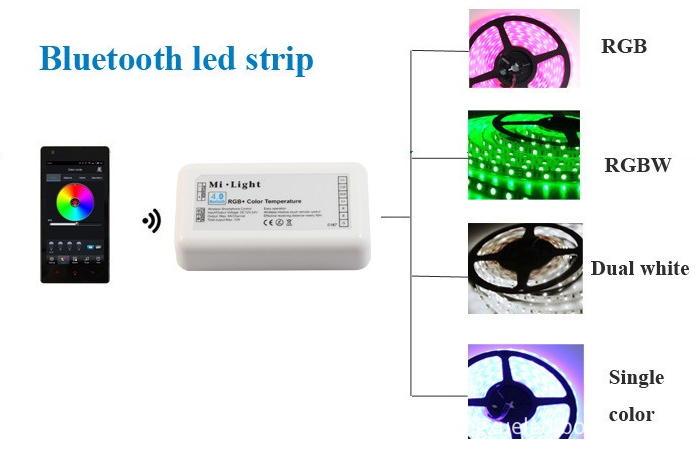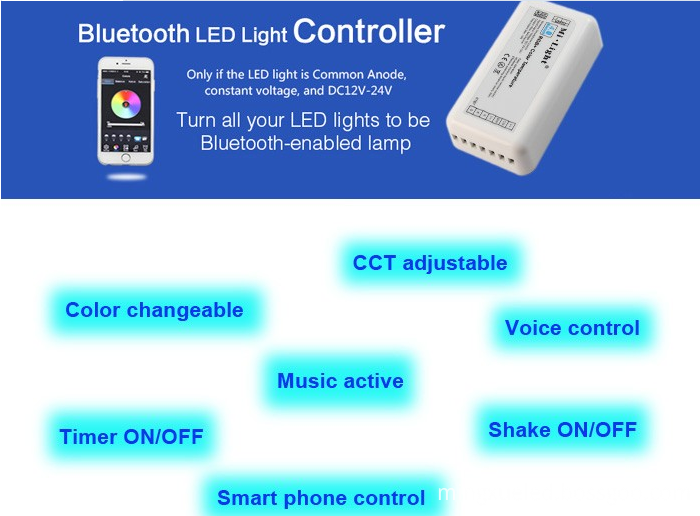Smart technology is an integral part of many consumer electronics devices today. In the home appliance market, more and more smart home appliances are beginning to adopt sensors in their designs to achieve advanced sensing and control. Position sensors, proximity sensors, level sensors, flow and speed control sensor technology are used in a wide range of appliances to improve accuracy, reliability and efficiency. Modern smart appliance design requires multiple sensors to be placed in each unit, as shown in Figure 1.
What is driving the application of sensors in the home appliance industry? This article will first discuss the four most important factors, including the use of microprocessor control systems in the design of home appliances. Then, the article will list two examples of non-contact sensing technology and explain their impact on home appliance design.

Four factors affecting the application of sensor in household appliances
1. The need for consumer convenience and home automation has driven demand for home appliances with smart sensors. As modern homes increasingly rely on smart technology, smart home appliances using advanced sensing technology enable simultaneous communication and control.
2. Demand for energy efficient and low-cost appliances continues to grow throughout the world, including Asia, South America and other continents.
3. Increasing energy prices and related government regulations require the use of energy-efficient household appliances. The widespread use of sensors in a variety of applications, including smart grids, smart buildings, and smart industrial process control, will help achieve more efficient resource utilization and reduce greenhouse gas emissions. By adopting advanced technologies with built-in energy efficiency, the level of energy and water demand is significantly reduced, while minimizing the corresponding waste of water and electricity.
4. The use of a microprocessor control system reduces the need for large mechanical contactors/relays and switching techniques that traditionally use a few ampere current switch incandescent lamps. Today's smart appliances require low voltage and low current switching/sensing devices. Non-contact sensing devices are an ideal replacement for mechanical devices. The next section will list a few examples and illustrate their use in the appliance market.
Non-contact sensor: reed switch and Hall effect
Reed switches and Hall sensors are non-contact sensing technologies suitable for millions of operating cycles. They are considered to be contactless because the starting device does not require physical contact with the sensor to change the sensor output. Now let's discuss the key details about reed switches and Hall sensors and how they affect today's home appliance design.
The RGB Color Controller is in a predetermined order to change the main circuit or control circuit wiring and circuit changes the resistance value to control the motor start, speed, braking and reverse master device to control RGB color.

Cumbersome, complex structure, once the design is complete, you can not modify or expand, but it's fast. Micro-controller design program easy, simple structure, convenient to modify or expand, modify a machine instruction function, simply restated the corresponding micro-program;
To add a machine instruction, just add some micro-control program in memory, however, RGB Color Controller is through the implementation of a micro program.

Specific comparison is as follows: a combination of hardwired logic controller, also known as the controller, by the logic circuit, relies entirely on hardware to achieve the function of the instruction.
Basic components to RGB Color Controller:
(1) the instruction register is used to store instruction being executed.
(2) Operation code decoder: instruction opcodes for decoding to produce the corresponding control level, to complete the analysis function of the instruction.
(3) Sequential Circuits: used to generate a time stamp signal.
Mingxue Optoelectronics Co.,Ltd. has apply the I S O 9 0 0 1: 2 0 0 8 international quality management system certificate, For RGB Color Controller we apply the CE, RoHS and SAA certificate for our led lighting product.
Our R & D team can handle highly customized designs and offer OEM and ODM services.
We hope to set up a long-term partnership with you through our high quality products and our Sincere Service!


RGB Color Controller
Rgb Color Controller,Color Rgb Led Controller,Colorful Rgb Led Touch Controller,Mini Rgb Color Controller
Shenzhen Mingxue Optoelectronics CO.,Ltd , https://www.led-lamp-china.com
